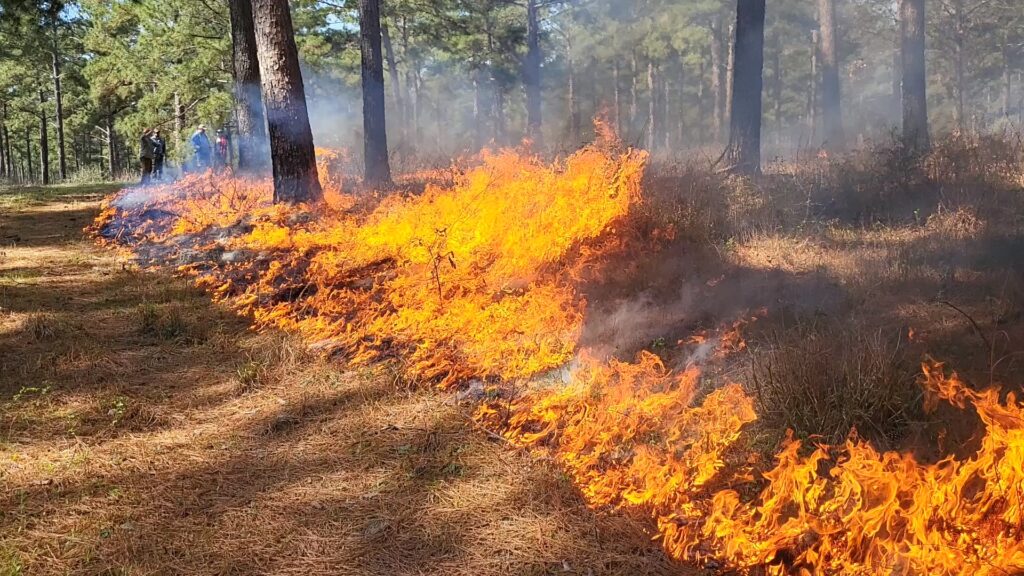By: Bee Harris
Wildfire is scientifically recognized to benefit forests and grasslands of Texas by strengthening the relationship between animal, plant, and environment. However, what used to be a natural phenomenon has mostly been curtailed by man. With natural wildfire becoming a rarer occurrence, extreme wildfires are more likely to occur in areas of dense underbrush and thick canopies.
One way to combat extreme wildfire is by introducing prescribed burns (or, control burns). When dry/dead plant matter is reduced, chances are greater that wildfire and extreme wildfire are less likely to destroy ecosystems.
There are for example, mechanical (forest mulcher), chemical (triclopyr), and foraging ways (goats, cattle) to reduce encroachment from native and non-native woody plants. However, prescribed burns benefit native animal and plant species in ways these can’t. Control burns can allow for new plant growth where there is too much duff (decaying leaves and branches) and not enough sunlight.
Evidence suggests prescribed burns in the warm summer months allow nutrients back into the soil, invigorate natural plant forage, control invasive grass, increase healthy animal populations by reducing diseases and pests and restore habitats. However, plant community composition may not be always be restored without including plant propagules after a control burn.
Reducing chances of wildfire:
https://www.nfpa.org/Education-and-Research/Wildfire/Firewise-USA
https://tfsweb.tamu.edu/WildlandUrbanInterfacePrograms
https://www.wildlandfirersg.org/s/?language=en_US
Bibliography:
Texas Parks and Wildlife Department (2021) Prescribed Fire in Texas. https://tpwd.texas.gov/landwater/land/wildland_fire_management/
Facebook Texas Prescribed Fire Council. About Prescribed Fire. https://www.facebook.com/groups/596698847791558/
Gene Howel Evacuation (2024). TPWD Wildlife Fire, Fuels &Aviat. Smokehouse Creek fire. https://www.youtube.com/watch?v=v9T0qDKrXig
Ecosphere / Volume 12, Issue 9 e03730 (2021). Season of prescribed fire determines grassland restoration outcomes after fire exclusion and overgrazing. https://esajournals.onlinelibrary.wiley.com/doi/10.1002/ecs2.3730



